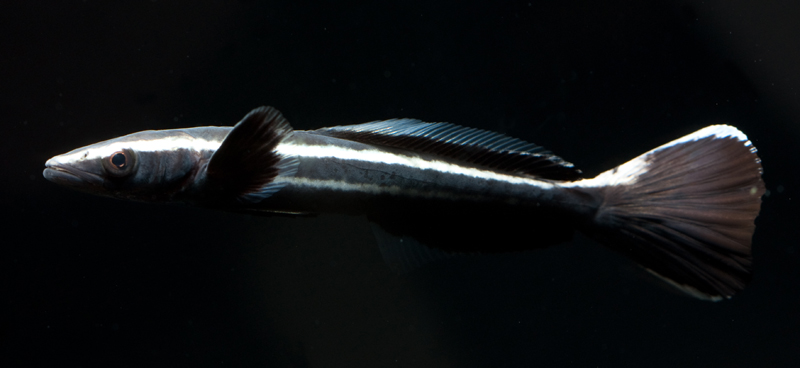
Juvenile cobia
One of the most satisfying aspects of collecting tropical fishes in New York, far outside of the tropics, is knowing that your activities have no impact on wild populations. Naturally, not every warm-water species you encounter will be the ideal candidate for your tank, but at least you can take some comfort in knowing that there are no regulations governing your catch (outside of the requirement for a general fishing license)…well, usually. It is important to keep in mind however, that part of being a responsible fish collector is having some knowledge of the life history of every species that finds its way into your possession. The cobia, Rachycentron canadum, is a great example of a warm-water fish that should not be taken, for a number of reasons. First of all, this is not a stray, but rather a highly migratory fish that can be found in the Northeastern US during the summer and fall, and it is regulated as such. In New York State, the minimum legal size for cobia is 37 inches (94cm) with a bag limit of two fish. Second, the cobia is a fast-growing, voracious predator that has no place in the average home aquarium. With a maximum length of 2 meters, a cobia would require an extremely large tank. Even in public aquaria, housed in tanks that are tens or hundreds of thousands of gallons, cobia can suffer obesity-related health problems, perhaps from being continually fed to satiation without the ability to make long-distance migrations. Young cobia like the one pictured above are often picked up in seine nets in the southern bays of Long Island. They are commonly mistaken for one of their closest relatives, a remora or shark sucker. Cobia behavior is similar to that of remoras as they often associate with a larger animal, riding on its pressure wave or within its slip stream. The easiest way to distinguish a juvenile cobia from a remora is that cobia lack the dorsal sucker disk that remoras use to attach to their hosts. Although I am obviously making a case for leaving undersized cobia in the ocean, I should mention that adult cobia are excellent eating and a lot of fun to catch on rod and reel. Check out the video below, taken by my friend Chris Paparo, of two adult cobia with a loggerhead turtle, just a few miles off the coast of Southampton, NY.










Cool. I seined up a 3″ one at cormorant point in the 70s. 🙂